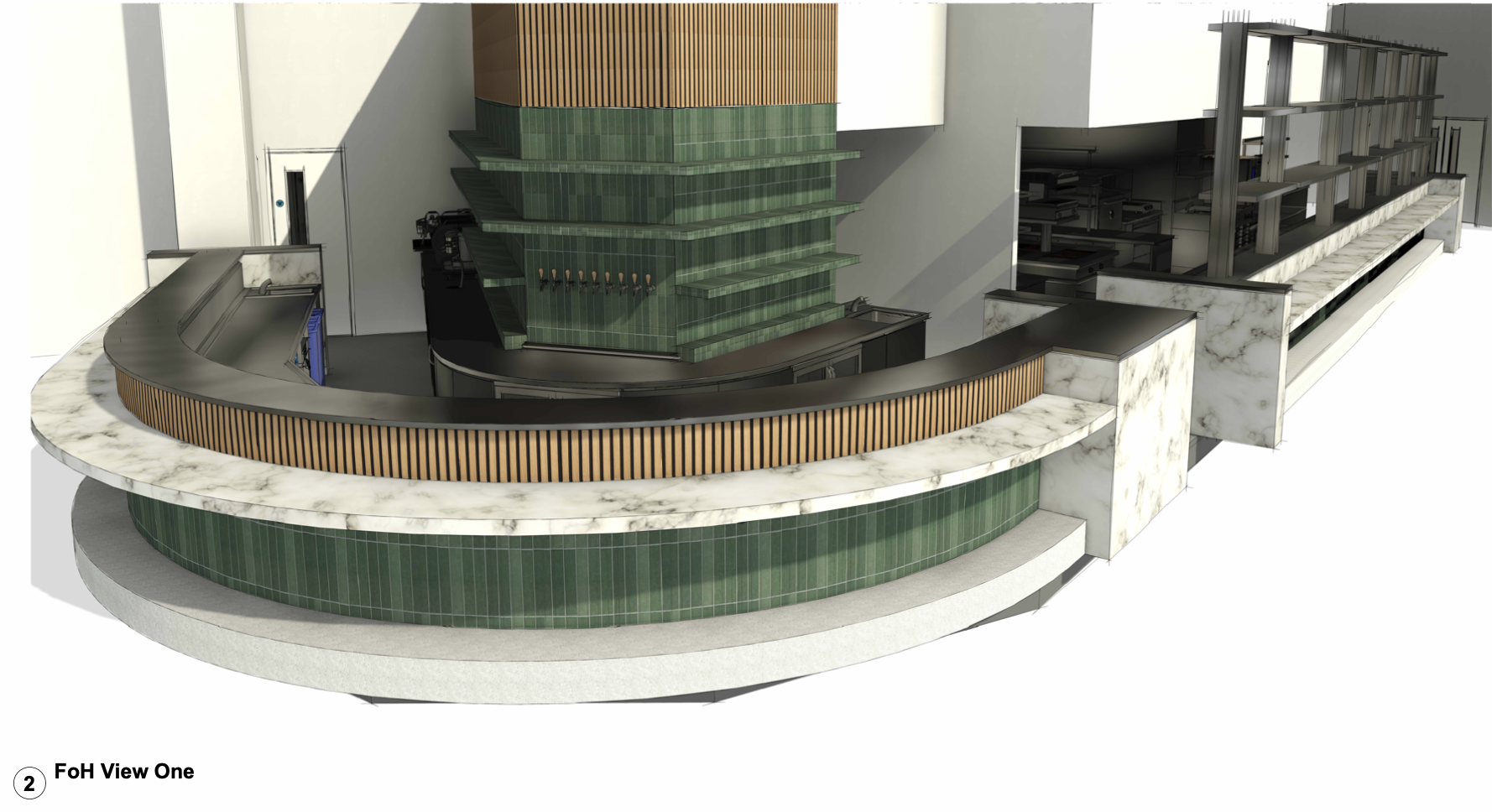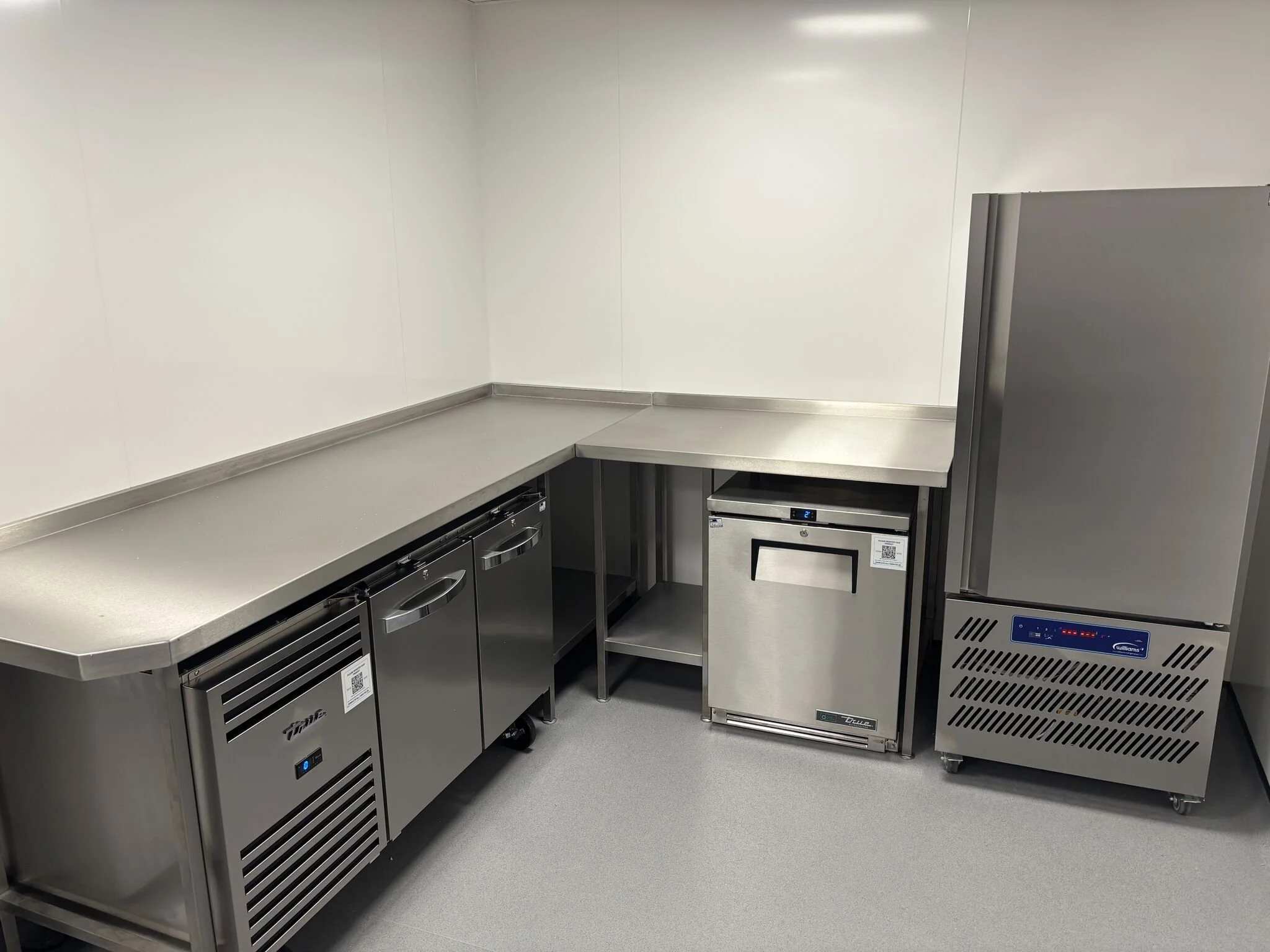How Revit is Transforming the Foodservice Industry
Discover how Revit and BIM are revolutionising the foodservice industry. From accurate 3D kitchen design to efficient project delivery, learn how Global Foodservice uses Revit to deliver better results.
The foodservice industry is changing fast. From hotels and schools to large-scale commercial projects, clients are demanding faster delivery, higher accuracy, and more efficient kitchens. To meet these expectations, design and project management teams are turning to Revit, a powerful Building Information Modelling (BIM) tool that is reshaping the way foodservice projects are delivered.
At Global Foodservice, we’ve seen first-hand how Revit is transforming the industry and the value it brings to clients, contractors, and operators alike.
What is Revit?
Revit is a BIM software platform used to create intelligent 3D models of buildings, spaces, and systems. Unlike traditional 2D design tools, Revit allows for data-rich models that integrate architecture, engineering, and services in one environment.
In foodservice, this means we can design commercial kitchens and catering facilities that are not only visually accurate but also technically precise and fully coordinated.
Key Benefits of Revit in Foodservice
1. Improved Accuracy and Coordination
Commercial kitchens are complex environments, with electrical, plumbing, ventilation, and equipment installations all competing for space.
Revit allows for clash detection, identifying conflicts between services and equipment before they become costly problems onsite.
This saves time, money, and frustration during installation.
2. Enhanced Visualisation for Clients
Clients no longer have to interpret flat 2D plans. With Revit, they can see their kitchens in realistic 3D views.
This improves decision-making and ensures the design reflects the client’s operational needs.
Added features such as walkthroughs and renders make it easier to get buy-in from stakeholders.
3. Efficiency in Design and Delivery
Because Revit models are data-driven, changes are automatically updated across drawings and schedules.
If a piece of equipment changes, every connected drawing and service plan reflects it instantly.
This drastically reduces errors and improves the speed of design delivery.
4. BIM Integration for Large Projects
For schools, hospitals, and major hospitality venues, BIM is now a requirement.
Revit enables foodservice design to integrate seamlessly into the wider building model.
This creates a single source of truth, making collaboration between architects, engineers, and contractors much smoother.
5. Future-Proofing Foodservice Design
Revit models aren’t just drawings — they’re digital assets that can be used throughout the life of the building.
Operators can use the data for maintenance, refurbishment, and long-term planning.
This future-proofs the investment and adds real value for the client.
How Global Foodservice Uses Revit
At Global Foodservice, Revit is embedded into our design and project management processes.
We use it to deliver 2D and 3D kitchen layouts, full BIM-coordinated designs, and detailed service drawings.
Our clients benefit from fewer errors, faster delivery, and greater confidence in their projects.
Whether it’s a hotel kitchen in Paris, a school in the UK, or a large-scale Middle East development, Revit helps us deliver projects with precision and clarity.
Final Thoughts
Revit isn’t just a design tool — it’s a game-changer for the foodservice industry. By improving accuracy, coordination, and efficiency, it allows us to deliver better outcomes for clients and create kitchens that work from day one.
At Global Foodservice, we believe the future of foodservice design lies in embracing digital tools like Revit and BIM. They simplify complexity, enhance collaboration, and ultimately ensure that projects are delivered on time and to the highest standard.
Are you planning a foodservice project?
Talk to Global Foodservice about how Revit and BIM can help bring your kitchen vision to life.
#Foodservice #Revit #BIM #CommercialKitchens #GlobalFoodservice
The Shortage of Project Managers in the Foodservice Equipment Industry: Why It Matters
Discover why the foodservice equipment industry faces a shortage of skilled project managers, the impact on kitchen design and installations, and how Global Foodservice is helping clients overcome these challenges.
The foodservice equipment industry is undergoing rapid change. From schools and hotels to large-scale international projects, the demand for high-quality kitchen design, installation, and project delivery has never been higher. Yet one challenge consistently surfaces: a shortage of skilled project managers.
At Global Foodservice, we see this issue impacting the industry daily — and it raises important questions about efficiency, delivery, and the future of foodservice projects.
Why Are Project Managers So Critical?
In foodservice, a project manager is more than a coordinator. They are the bridge between design teams, contractors, suppliers, and clients, ensuring everything runs smoothly from concept to completion. Their responsibilities include:
Managing timelines and budgets
Coordinating between multiple stakeholders
Ensuring technical accuracy across design, installation, and services drawings
Reporting back to clients with clear, actionable updates
Without this central role, even the best-designed kitchens or equipment installations can face delays, cost overruns, and inefficiencies.
What’s Driving the Shortage?
Several factors are contributing to the lack of experienced project managers in the foodservice equipment sector:
Increased demand for commercial kitchens – Driven by hospitality growth, school catering requirements, and global projects.
Technical complexity – With the adoption of BIM, Revit, and digital project management tools, project managers now need both technical and operational expertise.
Retirement of experienced professionals – Many seasoned project managers are leaving the industry, creating a gap that isn’t being filled fast enough.
Limited training pathways – Unlike design or engineering roles, project management in foodservice has fewer formal training programmes, leaving a skills gap.
The Impact on the Industry
The shortage doesn’t just affect companies — it affects clients and end-users too. Some of the most common consequences include:
Delays in project delivery
Higher costs due to inefficient coordination
Reduced client confidence when communication and reporting fall short
Strain on suppliers and contractors, who must often fill the gap without the right tools or oversight
How Global Foodservice is Responding
At Global Foodservice, we’ve built our services to directly address these challenges.
We offer full project management or targeted support (such as attending client meetings on behalf of contractors).
Our team uses the latest project software to keep timelines, budgets, and reporting clear and reliable.
With national UK coverage and international experience, we can scale support to the size and scope of the project.
We focus on transparent communication with tailored reporting, giving clients confidence at every stage.
Looking Ahead
The shortage of project managers in the foodservice equipment industry is real — but it also presents an opportunity. By investing in new technology, training pathways, and flexible service models, companies can bridge the gap and deliver better results for clients.
At Global Foodservice, we believe that collaboration and clarity are key. Our role is to simplify complex projects, connect the right people, and ensure that kitchens — whether in schools, hotels, or large commercial facilities — are delivered to the highest standard.
Ready to overcome the project management challenge?
If you’re planning a foodservice project and need support with delivery, reporting, or project oversight, we’d love to talk.
#Foodservice #ProjectManagement #CommercialKitchens #BIM #Revit #FoodserviceEquipment #GlobalFoodservice


